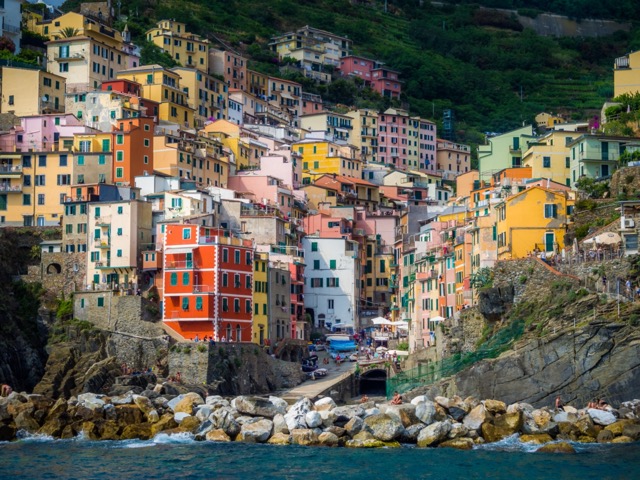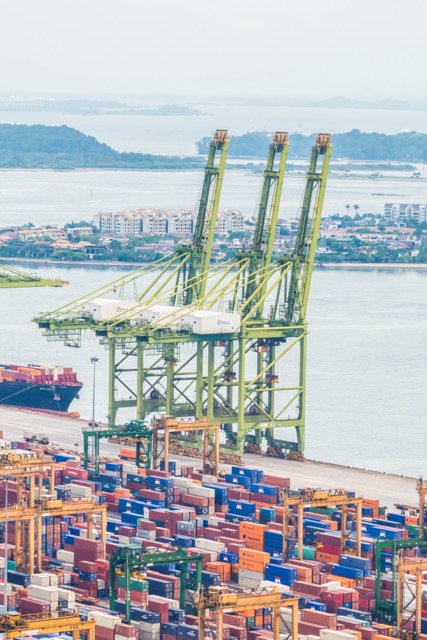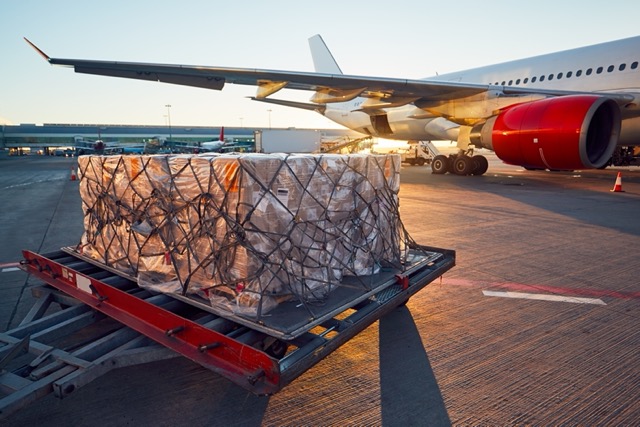Be your Logistics Department in China
Customized logistics solutions, your logistics expert in China
Customized logistics solutions, Shipping from China to the World
Tel:+8613424475220 Email:info@viputrans.com 

What effect have the closer trade relations between China and Italy had on logistics between the two countries? China-Italy international logistics relations are developing from traditional shipping-dominated to diversified, intelligent, and green。
In 2023, the total trade between China and Italy was about 71.758 billion US dollars. This shows strong trade cooperation and beneficial relations between the two countries. They help all kinds of companies, big or small, manage international market challenges more easily. By improving logistics and customs processes, Alibaba lowers the barriers for companies to enter the global market and offers digital tools to support active participation in international trade. This article explores the trade relationship between China and Italy and how digital platforms will shape the future of global business. Digital platforms like Alibaba are changing global trade.
Location: Liguria, northwest Italy
Type: The Largest and busiest port in Italy
Annual volume: About 2.5 million containers (TEUs)
Main cargo: Chinese goods, textiles, electronics, chemicals, cars, and machines
Advantages:Main port for ships from China, with good facilities
Good roads and trains that connect to France, Switzerland, and southern Germany
Location: Northeastern Italy, at the top of the Adriatic Sea. Features: A free port and a center for ship-to-train transport
Annual volume: About 7 million tons of crude oil, with container traffic growing fast.Main cargo: Oil, gas, cars, electronics, tools, and machines from China’s strengths
Has direct transport links to Central Europe (Austria, Hungary, the Czech Republic)
Often included in the Belt and Road plan as a key European hub
Location: Southern Italy, in Campania
Role: A shipping center in the southern Mediterranean
Type: Both a cruise port and a cargo port
Main cargo: Cold food, medicine, drinks (works with Chinese food companies), local goods, and farm products
Features: Serves southern Italy and North Africa
Weak train system, not good for moving lots of containers
Location: Tuscany, central Italy
Main cities served: Florence, Pisa, Siena
Main cargo: Expensive clothes, fabrics, leather goods (from China), and cars
Advantages: Linked to luxury brands like GUCCI and PRADA
Has good cold storage and transport systems
Location: Near Genoa, in western Liguria
Role: Handles vehicles (RoRo), raw materials, and energy goods. Also, a cruise port
Advantages: Works with Genoa to help reduce cargo transfer pressure
Location: Northeastern Italy Role: Used for both tourism (cruise ships) and container shipping.Links to inland Italy through waterways
Main cargo: Industrial parts, furniture, decorations (mostly from China)
Advantages: Modern, high-tech port and a model for eco-friendly (green) ports
40-foot container: about $7,900 20-foot container: about $5,950 From: Zhengzhou (China) To: Milan (Italy)
Travel time: about 18–25 days. The China-Europe Express uses both train and truck transport.
It’s good for large shipments that need faster delivery—cheaper than air, but faster than sea.
20-foot container: about $3,570 40-foot container: about $5,040 From: Tianjin Port (China) To: Livorno Port (Italy) Travel time: about 30–40 days Good for large shipments.
It is more cost-effective, though slower, compared to other transportation options.
Cost: about $5–12 per kilogram. Example: 100 kg of cargo costs about $850. Travel time: about 3–7 daysBest for goods that are valuable, lightweight, or need fast delivery.
Starting price: about RMB 3,600 per shipment. Charge by weight: about RMB 8 per kilogram. Charge by volume: about RMB 2,400 per cubic meter
Travel time: about 7–15 days. Best for small, time-sensitive goods with door-to-door delivery.
Choosing a suitable transportation plan requires comprehensive consideration of factors such as cost, timeliness, quantity of goods, and urgency. For smaller, high-value goods, express delivery fees are higher. For larger, less time-sensitive goods, full container transport is more cost-effective, ensuring space and better budget control。

Freight: Ocean, air, or rail transport fees (based on weight or volume)
Port/Railway Fees: Loading, unloading, warehousing, terminal fees at both departure and arrival ports
Customs Fees: Export/import customs broker services, tariffs, VAT
Optional Costs:
Insurance: Cargo transportation insurance (recommended)
Delivery/Logistics Fees: Land transport costs from the port to the customer in Italy
Packaging Costs: Especially for fragile or delicate items
Do you understand how import taxes and tariffs drive up the total cost of shipping from China to Italy? Understanding these fee structures is essential for developing an accurate budget and an effective pricing strategy.
The following will reveal their actual impact on overall logistics costs.
Tariffs are taxes on foreign goods entering a country, while VAT is a consumption tax on goods when sold or imported.
Example Calculation:
Value of furniture: €10,000
Freight and insurance: €1,000
CIF (Cost, Insurance, Freight) = €11,000
Tariff: €11,000 × 5% = €550
VAT: (€11,000 + €550) × 22% = €2,541
Total taxes: €550 + €2,541 = €3,091
Each commodity has an HS code, determining its tariff rate and regulations. The standard VAT in Italy is 22%, but some goods may have reduced or exempt rates. Corporations can usually deduct VAT,
while individuals/non-VAT registered persons must pay the full amount.
Time: About 25–40 days
Note: It depends on the departure port (like Shanghai, Ningbo, Shenzhen) and the destination port (like Genoa, Livorno, Naples). Transit time and customs clearance also affect the duration.
About 3-7 Description: Suitable for high-value, time-sensitive goods. Flight frequency, airline services, and customs clearance efficiency will affect the final time.
Time: About 15–22 days. Route: Starts from Yiwu, Chengdu, Xi'an, etc., passing through Kazakhstan, Poland, Germany, and ending in Italy (e.g., Milan). Advantages: Faster than sea transport, cheaper than air transport, ideal for goods with medium time and value needs
Time: about 2 to 5 days
Suitable for: small, high-value items. This option costs more but is the fastest.
What factors can cause shipping delays from China to Italy? While many outside factors can affect timeliness,
you can lessen delays. Identifying and planning for these risks early helps reduce their impact.
Influencing factors: Unstable routes. Mitigation measures include spacing in advance, choosing a reputable shipping company, or having multiple options。
Factor: Customs clearance issues
Solution: Prepare complete documents (invoices, packing lists, certificates of origin) in advance and use professional customs agents.
High demand and limited resources cause peak season congestion. To reduce this, avoid shipping during busy times. You can also use rail or air transport instead of sea transport.
Influencing factors: Natural disasters and Weather. Solution measures: Pay attention to weather and port announcements in advance, and consider purchasing transportation insurance.
Influencing Public holiday impact Measures – Action: the delivery schedule in advance to avoid shipping before/during the holidays.

Door-to-door service is an easy and worry-free way to transport goods. The system fully manages and works well in international logistics, especially for trade from China to Italy.
The following are its main advantages:
1. Seamless Process
From picking up goods, export customs, international transport, import clearance, to final delivery, it's a one-stop service, avoiding coordination problems.
No need to deal with multiple carriers, customs brokers, or warehouses—one provider handles everything, reducing communication costs and risks.
Logistics companies often have experienced customs teams to prepare documents in advance, lowering the chances of delays or inspections.
Most costs are bundled (including freight, customs, delivery fees, etc.), making it easier for businesses to manage
budgeting and cost control.
Perfect for first-time exporters/importers, small businesses, or e-commerce sellers who don’t want to handle complex international logistics on their own.
How to choose a reliable door-to-door service provider? VIPU Logistics is a world-renowned supply chain logistics company with more than 15 years of experience in providing door-to-door integrated transportation services from China to all over the world.
20-foot standard container (20GP): Approximately $1,000 to $1,500.
40-foot standard container (40GP): Approximately $1,500 to $2,500.
40-foot high container (40HC): Approximately $2,000 to $3,500.
These prices are for direct routes between major ports. Examples include routes from Ningbo or Shanghai to ports like Genoa and Naples. For example, the cost of sea freight from Ningbo to Naples ranges from $1,905 to $5,255, depending on the shipping company and the voyage.
Departure Ports: Shenzhen, Guangzhou, Shanghai, Tianjin
Destination Ports: Genoa, Naples, Venice, Livorno, Arezzo, etc.
Freight (by cubic meter or weight):
Fee range: $30 – USD 90 per cubic meter (CBM)
Additional Fees:
- Documentation fee: ¥300 per ticket
- Customs clearance fee: ¥350 per ticket
- LCL fee: $40 per cubic meter
- ENS (Customs declaration fee): $25 per ticket
- Destination port fee: $100 – USD 300
1. Professional shipping agents are familiar with the tedious aspects of shipping, customs clearance, document preparation, etc. They can help you handle all the details and reduce the time you need to do it yourself.
2. Reduce extra costs: They can help you avoid unnecessary fees, like detention and storage fees. They also help you plan better transportation routes.
3. Experienced shipping agents know the customs rules of different countries and can ensure goods clear customs smoothly, avoiding delays or fines from document issues or other problems.

By weight: about $6 to $12 per kilogram. The cost is determined by the shipment's weight, size (volume), and the airline you select.
By volume: If your cargo is big but light, the air freight company will charge based on volume weight ("chargeable weight"). The common charging standard is: 1 cubic meter = 167 kg.
Generally, air freight time from China to Italy is 3-7 days, depending on the flight and destination airport. If you choose a direct flight, it is usually faster.
Advantages of Air Transport:
Fast: Air transport is quicker than sea transport, ideal for time-sensitive goods.
Safe: Air transport has a lower risk of damage or loss compared to other methods.
Good for small quantities: It’s perfect for small, light, high-value, or fragile items.
Wide routes: Many airlines and freight companies offer direct or transit routes between China and Italy, giving lots of options.
A professional air freight forwarder can provide efficient, reliable, and cost-saving solutions for your cargo transportation.
1. Reliable freight forwarders usually work with top airlines to ensure the safety of your goods during transportation. Air freight forwarders will arrange insurance to protect your goods during transport, especially for valuable, fragile, or perishable items.
2 . An air freight forwarder will help you with all shipping-related matters, including shipping arrangements, customs clearance, document processing, etc. You can save time and effort, allowing you to focus more on your business.
3. A reliable air freight forwarder will usually provide the best shipping solution based on your needs and budget. They can choose the most suitable routes and airlines for you, reducing unnecessary expenses (such as high transportation costs, detention fees, etc.).
LCL Cargo: About $3 per kilogram, including tariffs and other fees.
FCL Shipping: 20-foot container: Shipping from China to Italy costs about $2,850 to $4,250.
container: The cost ranges from $3,000 to $5,000.
Rail transport is about 20 days faster than sea transport and usually costs one-third of air transport.
Timeliness: Generally speaking, rail transport to Italy takes about 20 to 25 days.
Main advantagesEfficient Compared with sea transportation, rail freight is usually faster.、
For China-Europe trains, transportation usually takes 20 to 30 days, much quicker than sea transport, which can take over 40 days.
For goods that need faster delivery, rail is a good option. Compared to air transport, rail is usually cheaper. While rail is more expensive than sea transport, it offers faster delivery without a big cost increase.
Copyright © 2003-2025 VIPU Supply Chain Logistics Co., Ltd. | All Rights Reserved
LOGISTICS | E-COMMERCIAL FULFILLMENT | ABOUT US | CASE | NEWS | VIDEO | CONTACT US
We will find the fastest or the cheapest way for your shipment. Please specify: where from, where to, what to ship.